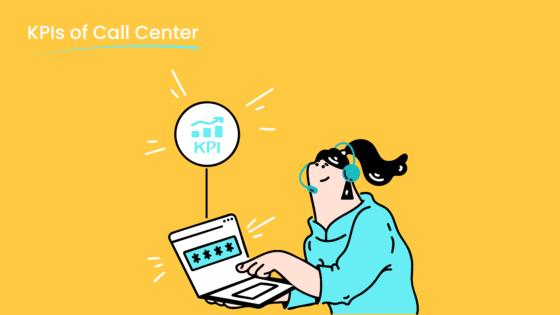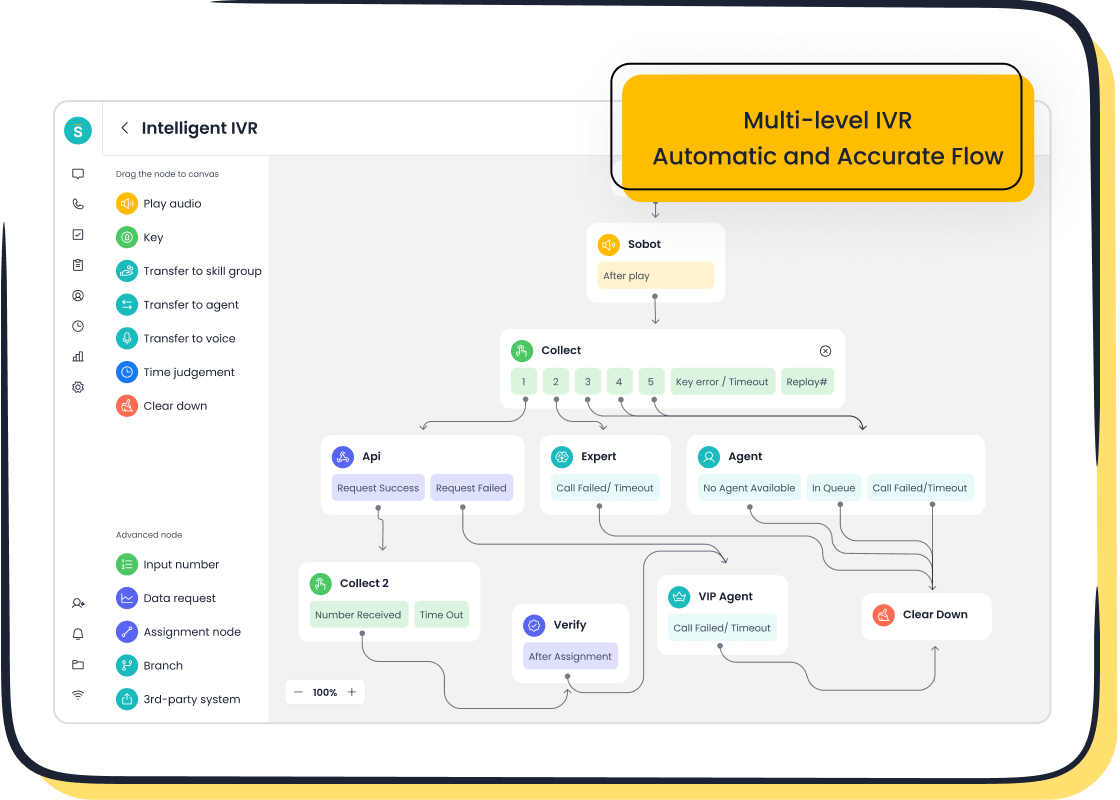First Call Resolution FCR Calculation and Measurement Guide

First Call Resolution (FCR) stands out as a vital contact center metric that measures how effectively your customer service team resolves customer service issues during the first interaction. It directly reflects the quality of your customer service experience and plays a pivotal role in customer service success. Studies show that a 1% increase in FCR correlates with a 1% rise in customer satisfaction, which can reduce service costs by 20% and boost revenue by 15%. High FCR rates also streamline operations, minimize follow-ups, and enhance agent morale. Tools like Sobot’s solutions help track resolved customer cases, ensuring a seamless customer experience.
Understanding First Call Resolution (FCR) and Its Importance

What Is First Call Resolution (FCR)?
Definition and scope of FCR in customer service
First Call Resolution (FCR) measures how effectively your customer support team resolves customer issues during the first interaction. It evaluates whether a customer’s problem is fully addressed without requiring follow-ups or escalations. FCR applies across various channels, including phone calls, emails, and live chats. A high FCR rate indicates that your team delivers efficient and effective solutions, which directly enhances the customer experience. Industry standards suggest that an FCR rate between 70-75% is ideal, meaning only about 30% of customers should need to contact you again for unresolved issues.
How FCR differs from other metrics like Average Handle Time (AHT)
Unlike metrics such as Average Handle Time (AHT), which focuses on how quickly agents resolve issues, FCR emphasizes the quality of resolution. While AHT prioritizes speed, FCR ensures that customers leave satisfied after their first contact. This makes FCR a more comprehensive indicator of customer support effectiveness. For every 1% improvement in FCR, businesses see a 1% increase in customer satisfaction and a 1% reduction in operating costs, showcasing its financial and operational value.
Why First Call Resolution Matters
Impact on customer satisfaction and loyalty
FCR plays a critical role in shaping customer satisfaction and loyalty. Studies reveal that 52% of customers rank first call resolution as the most important factor in their customer experience. Resolving issues on the first attempt builds trust and encourages repeat business. When customers feel valued, they are more likely to remain loyal to your brand.
Operational benefits of achieving high FCR rates

Achieving a high FCR rate benefits your operations by reducing the volume of repeat inquiries. This minimizes agent workload and improves efficiency. Additionally, it lowers operational costs by cutting down on the resources needed for follow-ups. Tools like Sobot’s Voice/Call Center help track and improve FCR rates through features like smart call routing and real-time monitoring, ensuring seamless customer support.
How to Calculate First Call Resolution Rate Effectively
The Formula for First Call Resolution Rate
FCR formula: (Resolved Cases ÷ Total Cases) × 100
To calculate FCR, divide the number of resolved cases by the total number of cases, then multiply by 100. This formula provides the percentage of issues resolved during the first interaction. For example, if your team resolves 800 cases out of 1,000, the FCR rate is 80%. This simple calculation helps you measure first contact resolution and assess your team's efficiency.
| Method | Description |
|---|---|
| Asking the Customer on the Call | Advisors ask customers if their issue was resolved satisfactorily at the end of the call. |
| Customer Feedback | Utilizes methods like mystery shopping and surveys to gather customer feedback on issue resolution. |
| No Repeat Calls in a Given Timeframe | Assumes a customer’s issue is resolved if they do not call back within a specified period. |
| Repeat Contact Reasons | Analyzes reasons for repeat contacts to create individual FCR scores based on specific issues. |
| Using a Dashboard Process | Focuses on identifying top repeat contact reasons and creating dashboards for tracking FCR improvements. |
These methods ensure accuracy when you calculate FCR and provide insights into improving your first call resolution rate.
Example calculation for better understanding
Imagine your contact center handled 1,200 customer interactions last month. Out of these, 960 were resolved during the first contact. Using the formula, you calculate FCR as follows:
(960 ÷ 1,200) × 100 = 80%
This means 80% of your customers had their issues resolved on the first attempt, reflecting a strong focus on customer satisfaction.
Factors to Consider for Accurate FCR Calculation
Defining 'resolved' in your business context
The definition of "resolved" varies by business. For some, it means no follow-up is required. For others, it includes customer confirmation of satisfaction. High performance in first call resolution directly impacts customer satisfaction, referrals, and retention rates.
An issue is considered resolved if no repeat contact or follow-up is required after the first interaction, but this can vary in certain cases, especially for complex technical issues.
Establishing a clear definition ensures consistency when you calculate FCR and measure first contact resolution.

Addressing multi-channel interactions (phone, email, chat)
Modern customer service spans multiple channels. To measure first contact resolution accurately, track interactions across phone calls, emails, and live chats. Post-call surveys and CRM data help you calculate FCR effectively. Tools like Sobot’s Voice/Call Center simplify this process by integrating data from all channels into one platform. This unified approach improves the accuracy of your FCR calculations and enhances the overall customer experience.
Measuring First Call Resolution with Sobot's Voice/Call Center
Methods for Measuring First Call Resolution
Using customer surveys and feedback
Customer surveys provide valuable insights into how well your team resolves issues during the first interaction. You can ask customers directly if their problem was resolved to their satisfaction. Post-call surveys or follow-up emails are effective ways to gather this feedback. For example, a simple question like, "Was your issue resolved during this call?" can help you measure first call resolution accurately. Sobot's Voice/Call Center simplifies this process by integrating survey tools into its platform. This allows you to collect and analyze customer feedback seamlessly, ensuring you stay informed about your team's performance.
Leveraging call monitoring and quality assurance
Call monitoring and quality assurance (QA) processes are essential for measuring first call resolution. By reviewing recorded calls, you can identify whether agents resolved issues effectively. QA also highlights areas where agents may need additional training. Implementing a robust QA process helps you measure key metrics like call resolution rates and customer satisfaction scores. Sobot's Voice/Call Center offers real-time call monitoring and analytics, enabling you to track agent performance and improve FCR rates. These tools ensure that your team consistently delivers high-quality service.
Tools for Measuring FCR
Sobot's Voice/Call Center features for FCR tracking

Sobot's Voice/Call Center provides advanced tools for tracking first call resolution. Features like smart call routing ensure that customers connect with the right agent, reducing the need for follow-ups. The platform also offers real-time monitoring and detailed analytics, allowing you to measure FCR rates effectively. For example, you can track metrics such as call resolution rates and average handling time in one unified dashboard. These insights help you identify trends and make data-driven decisions to improve your team's performance.
Integration with CRM systems for enhanced measurement
Integrating your contact center with a CRM system enhances your ability to measure first call resolution. A CRM system consolidates customer data, making it easier to track interactions across multiple channels. This integration also supports management monitoring and customer feedback collection. For instance, you can measure metrics like call resolution rates and customer satisfaction scores directly within the CRM. Sobot's Voice/Call Center integrates seamlessly with CRM systems, providing a unified platform for tracking and improving FCR. This ensures that your team has the tools needed to deliver exceptional service.
Tip: Use a combination of customer surveys, call monitoring, and CRM integration to measure FCR comprehensively. This approach ensures accuracy and provides actionable insights.
Benchmarks and Challenges in First Call Resolution
Industry Benchmarks for First Call Resolution Rate
Average FCR rates across different industries
Understanding industry benchmarks helps you evaluate your first contact resolution rate effectively. Different sectors have varying standards based on the complexity of their services. For example, retail often achieves higher rates due to straightforward customer inquiries, while tech support faces more challenges with complex issues. Below is a table showcasing average FCR rates across industries:
| Industry | Average FCR Rate |
|---|---|
| Retail | 78% |
| Insurance | 76% |
| Health Insurance | 72% |
| Financial | 71% |
| Energy | 71% |
| Tech Support | 65% |
| Telco | 61% |

These benchmarks provide a clear picture of where your business stands and help you identify areas for improvement.
What constitutes a 'good' FCR rate
A "good" first contact resolution rate depends on your industry and customer expectations. Generally, an FCR rate above 70% is considered strong. However, aiming for higher rates, such as 80% or more, can significantly enhance customer satisfaction. Businesses using tools like Sobot's Voice/Call Center often achieve better rates by leveraging features like smart call routing and real-time monitoring.
Common Challenges in Achieving High FCR
Misinterpreting unresolved cases
One common challenge is misinterpreting what qualifies as an unresolved case. For instance, if a customer contacts you again within a short period, it may indicate dissatisfaction with the initial resolution. Research shows that 90% of customers feel dissatisfied when their issues remain unresolved, and 40% may switch to competitors. To address this, you must define "resolved" clearly and train agents to meet these standards consistently.
| Source of Error | Percentage |
|---|---|
| Agent mistakes | 38% |
| Customer miscommunication | 13% |
| Organizational policies | 49% |
| Customer dissatisfaction due to FCR failure | 90% |
| Customer defection due to FCR failure | 40% |
Overlooking the role of multi-channel interactions
Disconnected support channels often hinder your ability to measure and improve first contact resolution rates. Customers today use multiple channels like phone, email, and chat. If these channels operate in silos, it becomes difficult to track whether an issue was resolved during the first interaction. Tools like Sobot's Voice/Call Center integrate all channels into a unified platform, ensuring seamless tracking and improving your FCR rate.
Tip: Ensure your support channels are interconnected to provide a consistent customer experience and boost your first call resolution.
Best Practices for Improving First Call Resolution

Training and Empowering Customer Service Agents
Comprehensive training on products and services
Effective training equips your agents with the knowledge they need to resolve customer issues during the first interaction. You should develop training programs in collaboration with Learning and Development teams to prepare agents for diverse customer scenarios. For example, agents handling technical support must understand product specifications thoroughly to address complex inquiries. AI coaching tools can enhance training by providing personalized insights, helping agents refine their problem-solving skills. Regular feedback sessions also play a vital role in improving first call resolution rates. These sessions allow agents to learn from past interactions and apply better strategies in future calls.
Encouraging agents to take ownership of resolutions
Empowering agents to take ownership of customer issues fosters accountability and improves first contact resolution. When agents feel responsible for delivering solutions, they approach problems with greater focus and determination. You can encourage this mindset by providing constructive coaching and recognizing agents who excel in resolving issues. Studies show that empowered agents are more likely to meet customer needs effectively, reducing the need for follow-ups. This approach not only boosts FCR rates but also enhances customer satisfaction and loyalty.
Leveraging Technology for Better FCR
Sobot's AI-powered Voice/Call Center for smart call routing

Technology plays a crucial role in improving first call resolution. Sobot's AI-powered Voice/Call Center ensures customers connect with the most qualified agents through intelligent routing systems. This reduces the chances of call transfers and enhances resolution efficiency. Advanced call analytics provide real-time insights into agent performance, helping you measure and improve FCR rates. Speech analytics identify common pain points, enabling targeted training programs that address recurring issues. By leveraging these features, you can streamline customer interactions and achieve higher FCR rates.
Using knowledge bases and automation tools
A well-organized knowledge base empowers agents to access accurate information quickly, which is essential for resolving issues during the first contact. Automation tools further enhance efficiency by handling repetitive tasks, allowing agents to focus on complex problems. For instance, Sobot's platform integrates AI-powered solutions that simplify workflows and improve first contact resolution. These tools not only save time but also ensure customers receive consistent and reliable support across all channels.
Optimizing Customer Service Processes
Streamlining workflows to reduce call transfers
Reducing call transfers is key to improving first call resolution. You can achieve this by streamlining workflows and ensuring agents have access to the right tools and information. For example, integrating Sobot's Voice/Call Center with your CRM system allows agents to view customer histories instantly, enabling faster and more accurate resolutions. Simplified workflows also minimize delays, ensuring customers receive timely support.
Regularly reviewing and updating resolution protocols
Resolution protocols must evolve to meet changing customer needs. Regular reviews help identify gaps in your processes and implement improvements. For instance, analyzing repeat contact reasons can reveal areas where agents need additional training or resources. Sobot's real-time monitoring tools provide actionable insights that support these reviews. By updating protocols consistently, you can maintain high FCR rates and deliver exceptional customer service.
First Call Resolution (FCR) remains a cornerstone of customer service success. It directly impacts customer satisfaction, loyalty, and operational efficiency. Studies show that 52% of customers rank FCR as the most critical factor in their experience, far surpassing other metrics. A 1% improvement in FCR not only reduces operating costs by 1% but also boosts customer satisfaction by the same margin. Businesses with high FCR rates retain 95% of their customers, highlighting its importance.
To improve FCR, focus on accurate calculations, multi-channel tracking, and agent training. Use tools like Sobot's Voice/Call Center to streamline workflows, leverage smart call routing, and monitor performance in real time. These steps ensure your team resolves issues effectively, enhancing customer trust and loyalty. By prioritizing FCR, you create a seamless and satisfying customer journey.
FAQ
What is the ideal First Call Resolution (FCR) rate for a business?
An ideal FCR rate ranges between 70% and 75%. This means most customer issues get resolved during the first interaction. Businesses using tools like Sobot's Voice/Call Center often achieve higher rates by leveraging features like smart call routing and real-time monitoring.
How does First Call Resolution impact customer satisfaction?
FCR directly influences customer satisfaction. Studies show that a 1% improvement in FCR increases customer satisfaction by 1%. Resolving issues on the first attempt builds trust and loyalty, encouraging repeat business and reducing customer churn.
Can Sobot's Voice/Call Center help improve FCR?
Yes, Sobot's Voice/Call Center offers features like AI-powered smart call routing and real-time analytics. These tools ensure customers connect with the right agents, reducing follow-ups and improving FCR. Businesses using Sobot often see significant improvements in customer satisfaction and operational efficiency.
How do you measure FCR across multiple channels?
You can measure FCR across channels like phone, email, and chat by integrating customer data into one platform. Sobot's Voice/Call Center simplifies this process by unifying interactions, enabling accurate tracking and analysis of FCR rates.
Why is defining "resolved" important for FCR calculation?
Defining "resolved" ensures consistency in FCR measurement. For example, a case is resolved if no follow-up is required. Clear definitions help you track performance accurately and improve customer satisfaction. Sobot's tools allow you to customize resolution criteria based on your business needs.
See Also
Essential Strategies for Effective Call Center Quality Management
Comprehensive Overview of Call Center Quality Management Systems
Key Attributes to Look for in Call Center CRM Tools
Enhancing Call Center Efficiency Through Effective Monitoring Techniques
